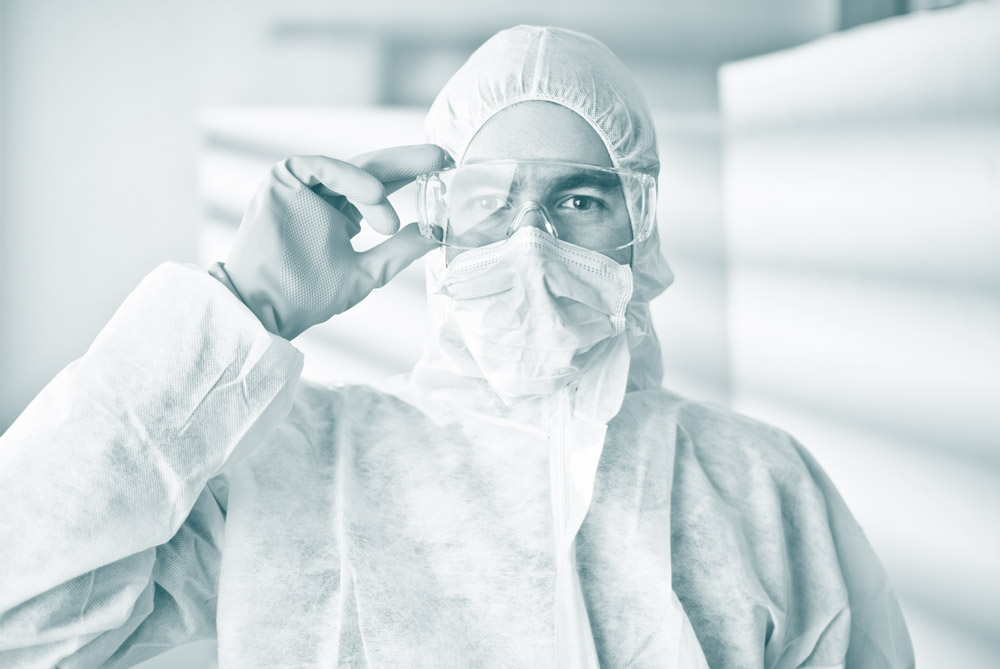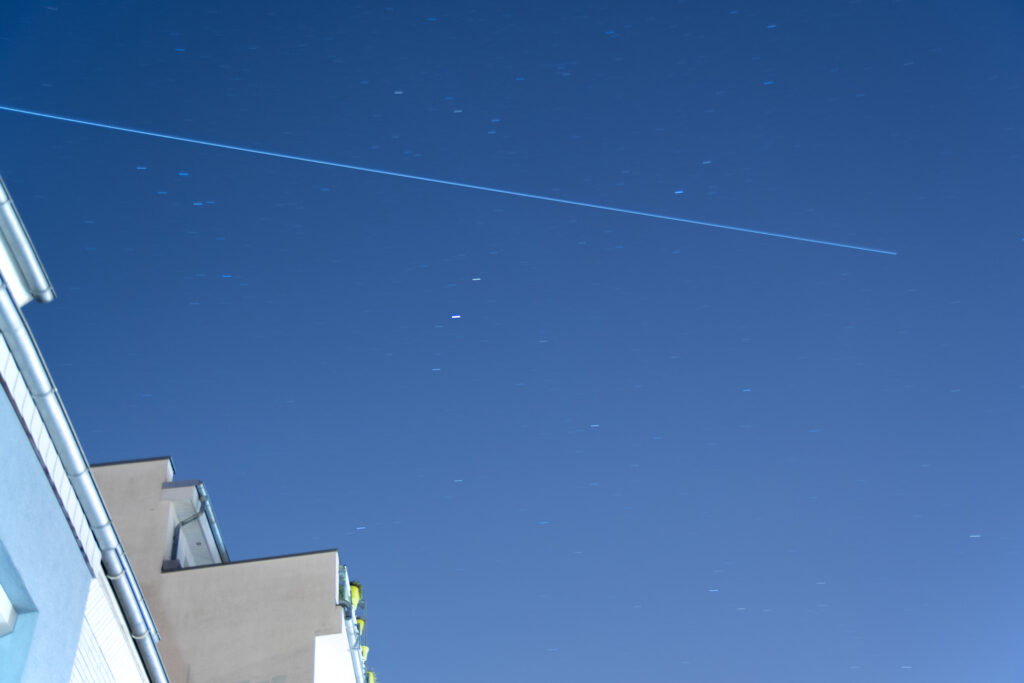Aerospace, Cleanroom News
Extreme Social Distancing?
Escaping COVID-19 in Low-Earth Orbit!
Berkshire community: how are you all holding up? With shelter-in-place becoming the ‘new normal’ to slow the spread of COVID-19 we are grateful to have the opportunity to reach out with industry news and to keep our noggins buzzing with new and – hopefully – interesting stories. With some of us having a lot more time on our hands – even if we’re still working from home there’s all that saved ‘commute time’ now – how are you filling your days? The silver lining in this terrible situation is that we get to spend more time with those who matter most – our families – and to pick up interests that we might have had to sideline for a while. Catching up on that towering to-be-read pile, developing a new skill, and getting around to all of those household tasks we swept under the carpet. Speaking of which, one of our team mentioned that since self-quarantining, his house has never been so clean – vacuuming is the new workout craze apparently* – and that led us to wonder why some folks hate household chores. We mean: How hard can they be? Well, that rather depends. What if, like astronaut Scott Kelly, your home is the International Space Station (ISS) and you’re there for a year? Just how does cleaning and – in the face of COVID-19 – contamination control work in space? Intrigued? Read on!
Continuously occupied for almost two decades, the ISS is arguably one of the greatest technical achievements in human history.
An international project, the craft was engineered from modules developed in and launched from 15 different countries with each partner nation maintaining responsibility for managing the hardware it supplied. Since its launch in 1988, the low-Earth orbit craft has been the locus of a broad range of STEM experiments – from hydroponic plant cultivation to the formation of plasma crystals in microgravity to the production of the biofuel isobutene from E. coli bacteria. And, given that it has housed many different crews, it has also been a pied à terre, albeit without so much ‘terre.’ And because of this dual use, the ISS has also been home to what is arguably the most interesting experiment in household cleaning. Moving at around 17,500 miles per hour at a distance of 250 miles above the ground, in addition to their scheduled research the ISS crews must additionally work on maintaining an orderly and contamination-free environment. Let us recall that, despite steps to manufacture components and supplies in a controlled environment, it is challenging to eradicate all vectors of contamination – as our earlier article, ‘Retrieving Clean Samples for Mars,’ noted. And if it weren’t enough to cope with fungal, bacterial, microbial, or particulate matter, there’s now the future contamination by coronavirus to consider and this pathogen has already caused serious problems. Take ExoMars, for instance…
A collaborative project between the European Space Agency (ESA) and Russia’s Roscosmos, ExoMars has been rescheduled to launch in 2022 due to COVID-19 fears.
Also known as ‘Rosalind Franklin’ to honor the English chemist and DNA researcher, the craft was due to set off in July this year but given that ‘[c]elestial mechanics define that only relatively short launch windows (10 days each) every two years exist in which Mars can be reached from Earth,’ the project has had to be pushed back.(1) In a verbose statement reported by CNN, Roscosmos’ Director General Dmitry Rogozin said: ‘It is driven primarily by the need to maximize the robustness of all ExoMars systems as well as force majeure circumstances related to exacerbation of the epidemiological situation in Europe which left our experts practically no possibility to proceed with travels to partner industries.’(2) In other words, given that those involved in its construction need abide by the shelter-in-place mandates outside of their control, the craft itself will also stay firmly planted ‘at home.’ ExoMars has already sent some components of the project up to the Red Planet – viz the Trace Gas Orbiter which, since launching in 2016, has reported its own data to ESA and Roscosmos and been instrumental in relaying information from NASA’s Curiosity rover and the InSight lander back to Earth. Clearly this project delay is problematic for the joint agencies, but the risk of carrying a virulent pathogen to an otherwise pristine planet is just too great.
Which makes us wonder when NASA too will reschedule its planned launch of a new Mars rover, Perseverance.
Back in January of this year, we brought you news of the project, alerting readers to the issue of contamination by second-hand smoke particulates from personnel. We were sufficiently concerned back then about the extent to which particulate matter might be carried to Mars aboard our scientific equipment but in the age of the pandemic, this question is even more worrisome. Due to fly in July 2020, Perseverance was engineered at NASA’s Jet Propulsion Laboratory in Pasadena, CA, before being shipped cross country to the Kennedy Space Center in Florida. According to news from the agency, the project is moving forward on schedule with two critical components of the craft integrated just weeks ago. The Adaptive Caching Assembly and the Bit Carousel are used to mine the Martian surface for samples that will be assessed, processed, and stored within the unit for return to Earth. Per the agency, ‘the coronavirus has not impacted the Mars Perseverance rover launch schedule. Launch preparations are continuing.’(3) Given how dynamic the situation is right now, we’ll be interested to see the extent to which this changes.
With all of that said, it remains true nonetheless that the most common vector of regular contamination is the humble human being. Whether these are folks briefly visiting a terrestrial cleanroom environment or are scientists like astronaut Scott Kelly and cosmonaut Mikhail Korniyenko who crewed the space station for a year-long mission, people are the most likely source of potential contamination. So, before we get too carried away with worrying about COVID-19 in space, let’s also take a look at regular contamination of the non-pandemic kind.
According to an article published by the BBC, thanks to earlier experiences on the Russian space station Mir, the ISS crews have learned lessons in the vital importance of maintaining a clean environment even in the sterility of space. In 1998, after 12 years in orbit, Mir began experiencing severe problems with power outages, climate control systems failing, and computers becoming unreliable forcing crews to investigate potential causes. ‘Opening an inspection panel, they discovered several globules of murky water – each around the size of a football. Later analysis revealed the water was teeming with bacteria, fungi and mites. Even more concerning were the colonies of organisms attacking the rubberised [sic] seals around the space station windows and the acid-excreting bugs slowly eating the electrical cabling.’(4) Just ponder that for a second: the window seals were perishing and the electrical system was being chewed to pieces. Whilst definitely not an encouraging state of affairs, it was a salutary lesson for ISS crew members who now know far more about the sort of ‘passengers’ who accompany personnel into orbit. Given that it is estimated that ‘more than half the cells in our body aren’t human,’ bacteria and microbes such as mites also find their way aloft, and researchers are finding that they too are adapting to life in microgravity.(5) As Christine Moissl-Eichinger, a faculty member at the Diagnostic & Research Institute of Hygiene, Microbiology and Environmental Medicine (Medical University of Graz in Austria) noted ‘Space is a very stressful environment, and not just for humans.’(6) Genetic adaptations and the nature of the microbial communities are likely to be impacted by the extra-terrestrial environment and the exact ways in which contaminants from the human biome change and evolve is of particular significance.
And the ISS is said to have developed ‘a stable population of some 55 different types of microorganisms [which] despite the lack of gravity […] have adapted well to their surroundings.’(7) But while this is great for the bacteria, fungi, moulds, protozoa and viruses identified on board it is not so wonderful for the ultimate integrity of the structure itself. What is the particular worry? Well, some of the microbes are metal eaters, generating their energy from secreting an enzyme that ‘partners an electron from the electrode with a proton from water to make a hydrogen atom, which the microbe can absorb.’(8) And we don’t know very much about them given how challenging it is to study them in a controlled environment. Extremophiles, in essence, these microbes thrive in environments that are almost impossible to replicate in a laboratory setting.
But that isn’t stopping teams from trying. As the Quanta Magazine article reveals, researchers are pushing to understand the mechanisms at work that allow a microbe to eat electrons directly from a metal surface: ‘A study published last year revealed the way that one of these microbes catches and consumes its electrical prey. And not-yet-published work suggests that some metal eaters transport electrons directly across their membranes — a feat once thought impossible.’(9)
Fortunately, however, dramatic metal-munching microbes are not the usual source of concern for crews of the space station.
Much more common are issues of bacteriological contamination like that detected in a drinking water dispenser system. In a study published in PLOS, an open access journal serving the science and research community, lead author Aubrie O’Rourke revealed how two kinds of bacteria – Burkholderia cepacia and B. contaminans, both genomovars of the Burkholderia cepacia complex (BCC) – were found to have colonized the potable water system (PWS) aboard the ISS. Given that they are tolerant to radiation, heavy metals, and antibiotics, bacteria of these genomovars are highly resistant to sterilization procedures and able to survive for long periods in distilled water. Even in space. Moreover, O’Rourke notes, on Earth the bacteria represent a significant threat to healthcare ‘as hospital-acquired BCC infections can arise from contaminated disinfectants, anesthetic solutions, distilled water, and aqueous chlorhexidine solutions.’(10) So how do the crews combat these pathogens – bacteria that have accompanied them throughout the mission? Christophe Lasseur, lead life support systems researcher at ESA, believes that it comes down to routine housekeeping. Much as those now sheltering-in-place are using the time to clean, those aboard the ISS are relied upon to sanitize their own environments both to protect themselves and to learn how not to pollute other worlds if and when we reach them. As the BBC article highlights: ‘It’s up to the crew to help keep the ISS microbiome population under control. Every week astronauts are scheduled to wipe down surfaces with antimicrobial wipes and use a vacuum cleaner to suck-up any stray debris. This is on top of daily housekeeping to keep kitchen areas clean and prevent sweaty exercise gear and equipment from going mouldy [sic].’(11)
Fortunately the signs are good that we will meet the challenge of minimizing contamination of new environments when the time comes. As ESA’s planetary protection officer, Gerhard Kminek, notes wryly: ‘Yes, we have a lot of microbes on our body, but we’re not going to be running around Mars naked. […] Astronauts will be wearing spacesuits to keep them alive and that will keep any contamination inside.’(12) Furthermore, we are now getting schooled in the vital importance of understanding the environmental impact we have on our own world. Having long accepted the nature of our global connection, its significance has been underlined as we’ve witnessed one country then the next reporting cases of coronavirus infection. Although faced with a pandemic, we can no longer continue to believe in business as usual and it is oddly comforting to note that the measures urged by our governments and social systems to avoid the spread of COVID-19 – self-isolation, reduction of physical contact, et cetera – are mirrored in the protocols already established by our space agencies. In their steps to minimize the passage of pathogens or other contaminants to other worlds, ESA, NASA et al have created a roadmap which we can follow in the weeks and months ahead. We just need to opt to pursue it with the same level of diligence as they do. After all, our lives truly depend upon it.
As you self-quarantine, know that we remain here for you. Reach out, let us know your thoughts, and stay well.
* Not really, but if it does become ‘a thing’ remember that you heard it here first!
References:
- https://www.cnn.com/2020/03/12/world/exomars-rosalind-franklin-rover-2022-launch-coronavirus-scn-trnd/index.html
- ibid
- https://www.jpl.nasa.gov/news/news.php?feature=7620
- https://www.bbc.com/future/article/20200311-how-do-you-keep-a-space-station-clean
- ibid
- https://www.bbc.com/future/article/20200311-how-do-you-keep-a-space-station-clean
- ibid
- https://www.quantamagazine.org/how-to-grow-metal-eating-microbes-20160621/
- https://www.quantamagazine.org/electron-eating-microbes-found-in-odd-places-20160621
- https://journals.plos.org/plosone/article?id=10.1371/journal.pone.0227152
- https://www.bbc.com/future/article/20200311-how-do-you-keep-a-space-station-clean
- ibid





















HAVE AN IDEA FOR CONTENT?
We are always looking for ideas and topics to write about.
Contact Us